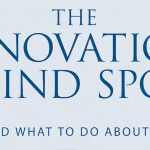Social Innovation Needs Data, This Free Platform Provides It
Innovation can take many forms, especially when addressing global development challenges. This can involve new products, a new business model, a new application of an existing idea and more – and there are thousands of such social innovations already on the market, many of them largely unknown. This means solutions to some of the most persistent social sector problems affecting people in low- and middle-income countries may already exist. And there is growing awareness about the importance of scaling promising, existing innovations in global development versus finding shiny new solutions, so they can reach those who need them most and create system-wide change in emerging markets.
However, one of the challenges of scaling tested and proven global development innovations is the incomplete, complicated and fragmented information about these innovations. The global development industry as a whole is wildly opaque, and the data that is available is dispersed in hard-to-find files, outdated databases, or in private internal systems. This makes the business of funding, supporting and scaling innovations incredibly time-consuming, costly and risky at best.
Global Innovation Exchange (GIE) is a data-driven technology platform with various supporting agencies, managed by Results for Development. It is addressing this challenge by giving funders, social entrepreneurs and others easy access to high-quality and up-to-date information about existing innovations, funding opportunities and funding history across emerging markets. Anyone can add their social innovations to the platform and include the basic details about the innovation, as well as key milestones achieved. GIE partners with funders and other ecosystem players to identify and verify these innovations, using milestones that can serve as a badge of validation, such as funds raised or recognitions earned. EnerGaia, for example, has a verified-funds-raised milestone for October 2016 (of $381,325) from the Australian Department of Foreign Affairs and Trade.
As a global public good, GIE’s goal is to empower entrepreneurs and key stakeholders with the information they need to make more informed decisions in their respective roles in scaling global development innovations. We’ve highlighted three ways data on the GIE platform can help experts and entrepreneurs do just that.
1. Keep up with promising social innovations globally
Traditionally, global development experts have relied on their networks, emails, phone calls, lengthy case studies and events to find existing innovations relevant to their area of work. GIE’s robust database streamlines this process with more than 8,300 innovations from more than 130 low- and middle-income countries in one place. Additionally, to help quickly find promising innovations, the platform has information about innovation quality, such as verified funding for close to 3,000 innovations from several major innovation funders, including USAID and the Bill & Melinda Gates Foundation. With access to promising innovation information across the globe, everyone in the ecosystem can make faster, well-timed and informed decisions.
2. Map key trends, gaps and opportunities
We’ve heard from funders and investors that they need to translate data about innovations into actionable business intelligence. For instance, they need data to answer questions such as:
- How many funding opportunities are available for innovations in a specific focus area, like health, education or agriculture?
- How much funding has gone to these innovations, and what are some of the key areas that have received the most funding?
- Which countries have the strongest innovation ecosystems, and which have been neglected?
To answer these questions and guide strategic priorities, GIE recently released the Global Development Innovation Landscape. The report is based on our platform’s information about innovations in emerging markets, and more than $440 million in cumulative funding opportunities that have been showcased on GIE for these innovations.
The platform also gathers the funding history of many major innovation funders in one place — encompassing more than $1.2 billion in funding in the last decade alone. This will help answer questions like “Which funders have made the highest investment in each focus area?” or “Which low- and middle-income countries have received the least funding for innovations?” This data shows where money has gone, and potentially, where it’s most needed.
3. Build stronger innovation ecosystems in emerging markets
Increasingly, the global development community recognizes the importance of building up local innovation ecosystems surrounding the entrepreneurs working on social innovations. There are a few key roles that a global database of innovations and funding can play in this work.
One such role involves validation: Social entrepreneurs with innovations that are most likely to go to market, receive multiple rounds of investments, and scale are often well-connected to global networks. If local social entrepreneurs in low- and middle-income countries don’t have these global connections, even if their innovation is the best-in-class, they simply won’t be in consideration because no one knows they exist. Local players such as accelerators and incubators can showcase their badge of validation for the innovations they have supported by sharing this data with GIE. This marks the innovations as verified on the platform and thus helps them “get on the map” and in front of key decision-makers and supporters across the globe. Such validation on a global database like GIE helps de-risk innovations, saves on due diligence time and cost for investors interested in providing follow-on funding, and increases the likelihood of investment in local social innovations.
Another role involves connections: By aggregating both promising local innovations and funding from around the globe, GIE helps make otherwise unlikely connections between the two. For example, thanks to its inclusion on the platform, a Kenyan social enterprise, Mama Maji, was able to secure funding as part of the Young Water Fellowship for Elizabeth Ntukai, a 25-year-old leading a water business in rural Kenya. And Response Innovation Lab uses GIE as a research and mapping tool in their work to bring together different parts of local humanitarian ecosystems in areas such as Iraq, Jordan, Somalia and Uganda. GIE allows them to find existing tested solutions that can be applied to challenges on the ground in humanitarian contexts as part of their Matchmaker program.
What’s next and what can you do?
As demonstrated by the various use cases above, a global database of innovations and funding is a necessary element, amongst many others, in helping social entrepreneurs, funders and others to maximize their impact. It can allow them to scale the most promising and fitting innovations, regardless of where they were created or whom the innovators know. If you have a global development innovation portfolio, share the data with Global Innovation Exchange so we can showcase your innovations on the platform and help you multiply the impact of your portfolio with GIE’s free fundraising tools.
Sweta Govani is the lead for Global Innovation Exchange, a technology platform for development innovations, funding and insights managed by Results for Development.
Photos courtesy of the author.
- Categories
- Investing



